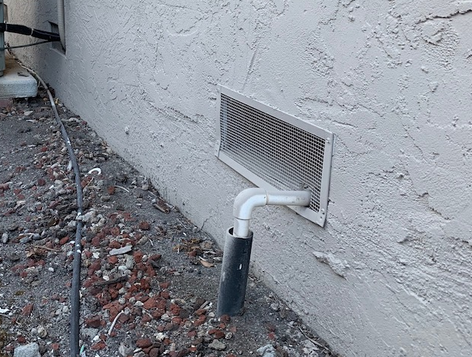Without the requirement for permanent installation, a portable air conditioner (AC) is a terrific method to cool down a room. Owners of portable air conditioners must, however, be aware of the water that collects during the chilling process.
Lack of effective drainage can cause leaks and even damage to the appliance itself as a result of excess water.
In this article, we will discuss how to drain water from your portable AC to keep it operating smoothly and effectively.

Step 1: Turn off the Portable AC
Before attempting to drain the water, turn off the portable AC and unplug it from the power source. This will prevent any accidents and ensure your safety while handling the unit.
Read also: AC Compressor Starts Then Shuts Off
Step 2: Move the Portable AC to a Drainage Area
Next, carefully move the portable AC to an area where it can be easily drained. Ideally, this should be a spot near a drain or an area where water can be collected, such as a bucket or a pan. Make sure to have a towel or some absorbent material on hand in case of any spills.
Step 3: Locate the Drain Plug or Hose
Most portable ACs come with a built-in drain plug or hose that allows for easy drainage of excess water. Locate this drain plug or hose on your unit. It is usually located at the bottom of the unit, near the back.
Step 4: Remove the Drain Plug or Hose
Depending on the type of drain plug or hose on your unit, you may need to unscrew or detach it in order to remove it. Refer to your user manual for specific instructions on how to remove the drain plug or hose.
Step 5: Drain the Water
Once you have removed the drain plug or hose, allow the excess water to drain out of the unit. Make sure that the water is being collected in a safe and appropriate location, and that it is not causing any damage or flooding to your home or surrounding area.
Step 6: Clean and Replace the Drain Plug or Hose
After the excess water has drained out of the unit, clean the drain plug or hose with a damp cloth to remove any dirt or debris that may have accumulated. Once it is clean, replace the drain plug or hose back into its original position, making sure it is securely attached.
Step 7: Restart the Portable AC
Once the drain plug or hose is securely attached, plug in the portable AC and turn it back on. It should now be running smoothly and efficiently, without any excess water accumulation.
In conclusion, draining water from your portable AC is a vital step in ensuring the longevity and effectiveness of your unit.
You can make sure your portable air conditioner is functioning well and keeping you cool during the sweltering summer months by following these easy steps.